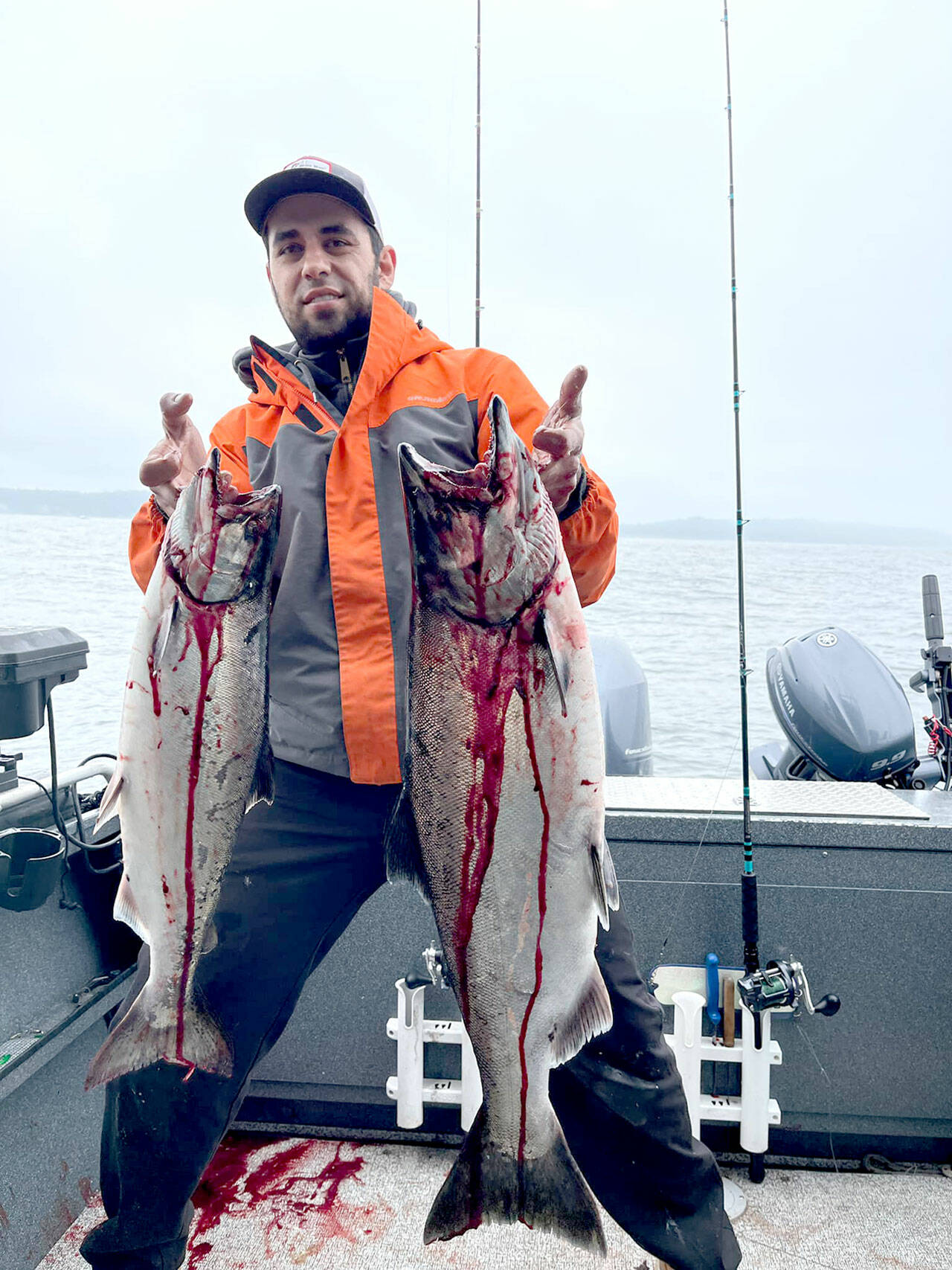ANOTHER DAY FOR hatchery chinook fishing in Marine Area 9 (Admiralty Inlet) has been approved by state Department of Fish and Wildlife salmon managers.
Anglers can fish for kings off Port Townsend on Sunday, with a daily limit of two salmon, including no more than one hatchery chinook.
Any retained king must be 22 inches or longer in length.
All sockeye, chum, wild kings and wild coho must be released.
Catch estimates for the Marine Area 9 summer chinook fishery indicate that 78 percent of the harvest quota (3,049 of 3,900) has been reached.
Ocean catches
Neah Bay (Marine Area 4) is likely to see it’s chinook guideline last through the season as recent estimates paint a rosy picture.
A total of 1,741 anglers participated in the salmon fishery July 22-28, landing 848 chinook and 583 coho. Through July 28, 5,057 chinook or 54 percent of the area guideline of 9,430 and 2,110 coho or 25 percent of the area quota of 8,300 coho have been landed.
A total of 168 anglers participated in the salmon fishery July 22-28, landing 40 chinook and 168 coho. Through July 28, 298 chinook or 18 percent of the area guideline of 1,630 kings and 382 coho or 18 percent of the area quota of 2,070 silvers have been landed.
Makah hatchery funding
The U.S. government will invest $240 million in salmon and steelhead hatcheries in the Pacific Northwest to boost declining fish populations and support the treaty-protected fishing rights of Native American tribes.
The departments of Commerce and the Interior said there will be an initial $54 million for hatchery maintenance and modernization made available to 27 tribes in the region, which includes Oregon, Washington, Idaho and Alaska.
Some of the facilities are on the brink of failure, Jennifer Quan, the regional administrator for NOAA Fisheries West Coast Region, said, with a backlog of deferred maintenance that has a cost estimated at more than $1 billion.
“For instance, the roof of the Makah Tribe’s Stony Creek facility is literally a tarp. The Lummi Nation Skookum Hatchery is the only hatchery that raises spring chinook salmon native to the recovery of our Puget Sound chinook salmon,” and it is falling down, Quan said.
Cougar hunting
Earlier this month, the state Fish and Wildlife Commission approved changes to cougar hunting seasons and declined to downlist gray wolves during its meeting earlier this month.
The new rule establishes the state cougar hunting season from Sept. 1 to March 31, sets a cap of 13 percent of each population management unit using a specific statewide density, and includes all known human-caused cougar mortalities to determine when to close a PMU during the season.
The commission incorporated an amendment in the cougar hunting rule to clarify that all known human-caused cougar mortalities contributing to the 13 percent cap will be counted between April 1 of the current year and March 31 of the subsequent year.
Additionally, the commission decided that, in PMUs that reach the 13 percent cap prior to the cougar hunting season starting on Sept. 1, the cap would be increased to 20 percent of the population to provide hunting opportunity in those PMUs.
The commission also directed staff to initiate rulemaking for the 2025-26 cougar hunting season.
Wolves remain listed
Department of Fish and Wildlife staff recommended the downlisting of gray wolves to sensitive following an in-depth periodic status review, citing recovery across significant portions of the species’ range, as prescribed in the Washington Administrative Codes, but, by a 5-4 vote, the commission would not agree or compromise to go from endangered to threatened instead.
Voting against changing the status of wolves were Chair Barbara Baker, Vice Chair Tim Ragen and Commissioners Woody Myers, Melanie Rowland and Lorna Smith of Port Townsend.
Commissioners Jim Anderson, John Lehmkuhl, Molly Linville and Steven Parker voted in favor of the downlisting motions.
A letter sent to Baker on Wednesday from Gov. Jay Inslee reiterated his request from last August that the commission not downlist wolves, that the species is not established in the third of three recovery zones outlined by 2011’s statewide management plan, and that the WAC is “internally inconsistent” on when to downlist.
________
Sports reporter/columnist Michael Carman can be contacted at sports@ peninsuladailynews.com.

